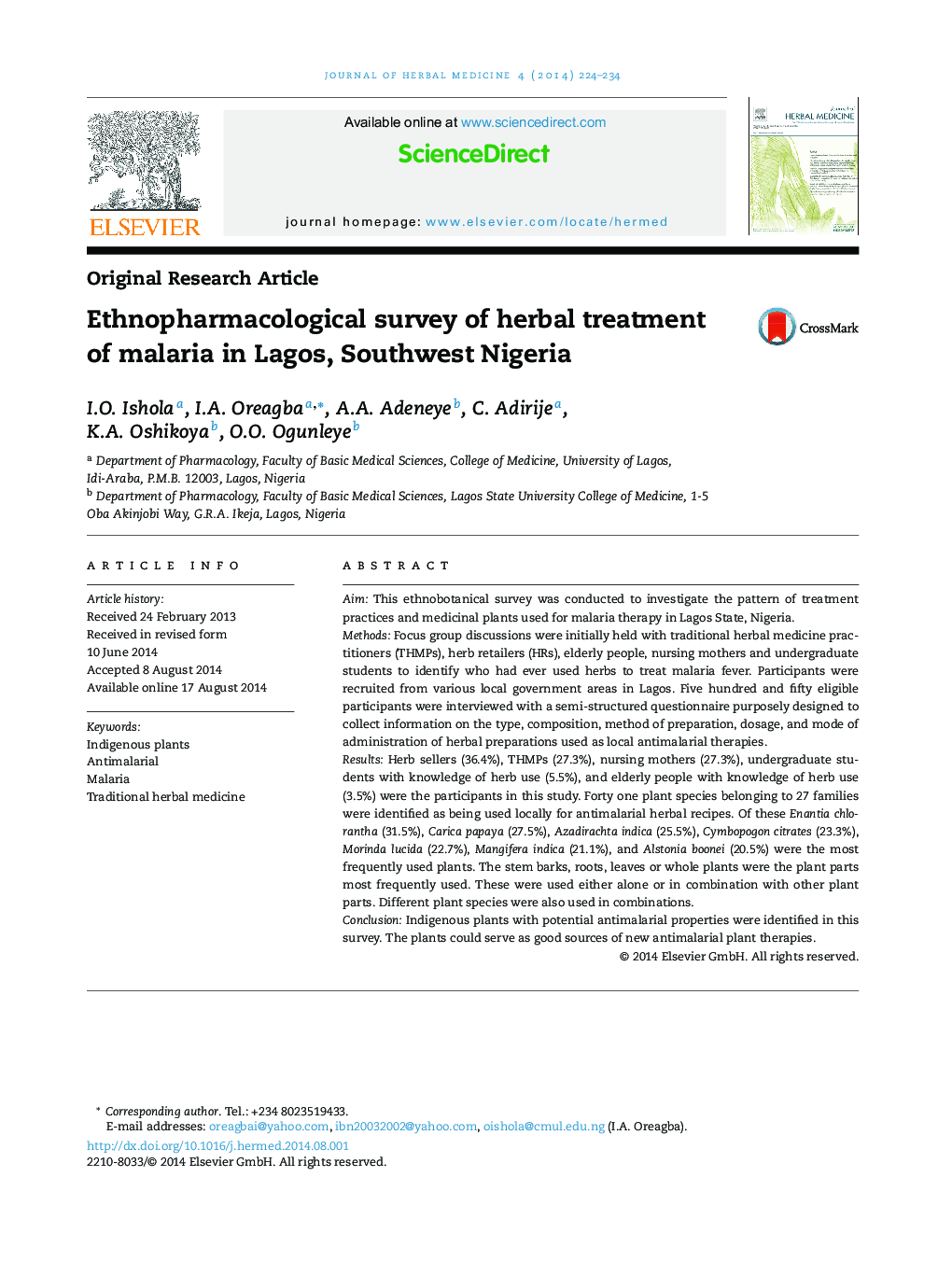| Article ID | Journal | Published Year | Pages | File Type |
|---|---|---|---|---|
| 2484116 | Journal of Herbal Medicine | 2014 | 11 Pages |
AimThis ethnobotanical survey was conducted to investigate the pattern of treatment practices and medicinal plants used for malaria therapy in Lagos State, Nigeria.MethodsFocus group discussions were initially held with traditional herbal medicine practitioners (THMPs), herb retailers (HRs), elderly people, nursing mothers and undergraduate students to identify who had ever used herbs to treat malaria fever. Participants were recruited from various local government areas in Lagos. Five hundred and fifty eligible participants were interviewed with a semi-structured questionnaire purposely designed to collect information on the type, composition, method of preparation, dosage, and mode of administration of herbal preparations used as local antimalarial therapies.ResultsHerb sellers (36.4%), THMPs (27.3%), nursing mothers (27.3%), undergraduate students with knowledge of herb use (5.5%), and elderly people with knowledge of herb use (3.5%) were the participants in this study. Forty one plant species belonging to 27 families were identified as being used locally for antimalarial herbal recipes. Of these Enantia chlorantha (31.5%), Carica papaya (27.5%), Azadirachta indica (25.5%), Cymbopogon citrates (23.3%), Morinda lucida (22.7%), Mangifera indica (21.1%), and Alstonia boonei (20.5%) were the most frequently used plants. The stem barks, roots, leaves or whole plants were the plant parts most frequently used. These were used either alone or in combination with other plant parts. Different plant species were also used in combinations.ConclusionIndigenous plants with potential antimalarial properties were identified in this survey. The plants could serve as good sources of new antimalarial plant therapies.
